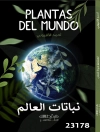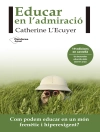In ‘A Child’s Guide to Pictures, ‘ Charles H. Caffin masterfully introduces young readers to the world of visual art, weaving together insightful explanations with accessible language. The book is structured to foster an appreciation for art by breaking down complex concepts into engaging narratives, complemented by an array of illustrations. Caffin’s literary style is characterized by simplicity and clarity, making art approachable for children while situating the work within the broader context of art education during the early 20th century, a time when visual literacy began to gain importance in the educational curriculum. Charles H. Caffin was a notable critic, educator, and author whose experiences in the art world informed his writings. Having immersed himself in the study of art and its appreciation, Caffin was passionate about making art accessible to all, especially children. His pedagogical approach reflects his belief that the understanding of art can significantly enhance a child’s emotional and intellectual development, bridging the gap between artistic expression and youthful curiosity. I highly recommend ‘A Child’s Guide to Pictures’ to parents, educators, and anyone interested in nurturing a child’s artistic sensibility. Caffin’s engaging prose invites readers to explore the beauty of art, making it an essential addition to any child’s library that aims to cultivate creativity and critical thinking.
เกี่ยวกับผู้แต่ง
Charles Henry Caffin (1854-1918) was a prominent figure in the world of art criticism during the late 19th and early 20th centuries. As an English-born American critic, he played a significant role in shaping the appreciation and understanding of visual art in the United States during a period of burgeoning cultural development. Caffin’s keen insights and ability to articulate the nuances of artistic expression made his guidance accessible and invaluable to a broad audience. His scholarly work ‘A Child’s Guide to Pictures’ (Caffin, 1908) is emblematic of his dedication to art education, aimed at nurturing a young readers’ capacity to engage with art on a deeper level. The book is notable for its pioneering approach to art appreciation for children, which encouraged looking beyond the mere superficial aspects of an artwork to grasp its emotional and narrative essence. Caffin’s literary style is characterized by a clarity of thought and a conversational tone that manages to be both informative and engaging. His contributions to the field of art criticism and his efforts to democratize the appreciation of art have rendered his works enduring pieces of cultural literature, resonating with audiences long after his passing.












